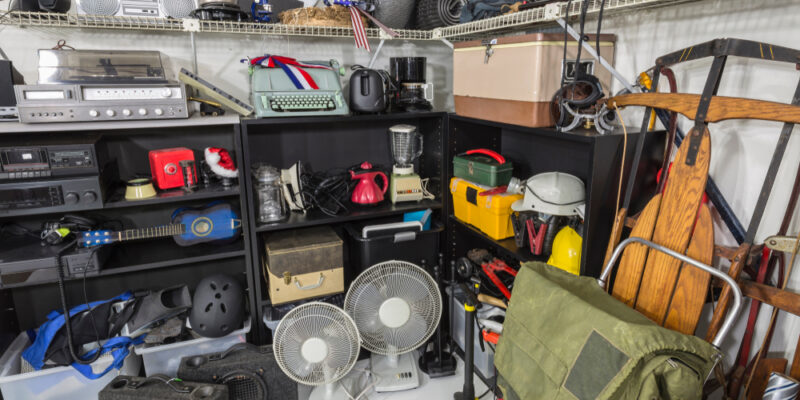Garages serve as an excellent storage space for tools, supplies, and other frequently used materials. However, ensuring an organized and efficient garage workbench is crucial for successful projects. A corner workbench in the garage offers an ideal solution to optimize storage while creating a productive workspace. Let’s check the advantages and disadvantages of establishing a working bench in your garage corner.
What Is a Corner Workbench?
A corner workbench is a specialized type of working bench that conveniently fits into the corner of your garage. It typically features two sides, allowing for efficient use of space. This unique design offers easier access to tools and materials compared to traditional flat surfaces.
Corner workbenches are usually available in various shapes, sizes, and styles, all serving the common purpose of providing a dedicated workspace for project completion. By considering a custom garage workbench that can be fitted to your specific requirements, you ensure optimal functionality for your projects.
Benefits of a Corner Workbench
Creating a workbench in the corner of your garage offers numerous advantages. One of the key benefits is its space-saving feature, enabling you to store more items compared to a regular flat surface workbench. Corner benches are excellent for organizing tools and materials due to their multiple compartments and shelves. This versatility makes them suitable for various projects, be it woodworking or auto repair. Corner workbenches are available in different sizes and styles. This allows you to find the perfect fit for your garage corner.
An additional advantage of using a corner workbench is the enhanced level of safety it provides. Compared to conventional workbenches, corner benches are generally built with more robust foundations, making them ideal for heavier projects that require stability. Corner workbenches can also contribute to the visual appeal of your garage, adding an attractive touch without compromising functionality.
Potential Downsides of a Corner Workbench
While there are numerous benefits of having a corner workbench in your garage, consider any potential drawbacks as well. One of the primary disadvantages is the cost. Corner workbenches often come with a higher price tag compared to traditional flat surfaces, so if you are on a tight budget, it may not be the most suitable option.
If your garage is already limited in space, adding a corner workbench may further restrict the area. Depending on the nature of your project, accessing certain tools and materials on a corner workbench could prove challenging.
Tips for Choosing a Corner Workbench
When picking a corner bench, there are a few key factors to take into account. Firstly, consider the garage’s size and shape. Find a working bench that fits snugly into the corner without occupying excessive space. Next, think about the specific projects you intend to undertake and the materials you’ll need to access. This will help you determine which type of corner workbench is most suitable for your needs. Lastly, take your budget into consideration, including the cost of materials required for construction.
Setting Up a Garage Corner Workbench – Step-by-Step Guide
After selecting the appropriate corner workbench for your requirements, it is high time to begin the setup process. Below are a few steps to help you get started:
- Take measurements of the corner in your garage and determine the optimal location to install your working bench in that space.
- Get all the essential supplies for the construction project, including wood, screws, brackets, and nails.
- Resize the wood and construct the components as per your blueprint.
- Assemble all of the components together using screws or nails.
- Add final details such as shelves, drawers, or other storage compartments to enhance functionality and organization.
- Put the completed corner workbench in your garage and begin using it for your projects.
With the following guidelines, you can assemble a durable and practical garage corner workbench that will serve you for years.
Frequently Asked Questions
How Much Does a Corner Workbench Cost?
The price range of a corner workbench can differ based on factors such as size, materials utilized, and incorporated features. Typically, a high-quality corner workbench would cost between $100 and $500.
Are Corner Workbenches Safe?
Yes, corner workbenches are generally considered safe when correctly installed and maintained. Compared to conventional benches, they tend to be more stable due to their robust foundations. This feature significantly reduces the risk of accidents during garage projects.
How Do I Maintain a Corner Workbench?
Keeping a corner workbench in ace condition is a straightforward process. Regularly inspect for any loose screws or hardware and examine the surface for signs of wear and tear. Ensure that you wipe down the bench after each use to maintain a clean and debris-free surface.
What Materials Are Corner Workbenches Made of?
Corner workbenches are commonly crafted from wood, metal, or a blend of both. The prevailing materials employed in their construction consist of plywood and particleboard for the surface, accompanied by steel frames and brackets.
Conclusion
Setting up a workbench in the corner of your garage is a smart way to optimize space and create an efficient workspace for your projects. These benches come in various sizes and styles, allowing you to pick a gear that perfectly suits your garage. With improved organization, durability, and aesthetics, corner workbenches offer numerous benefits. However, you should also consider the cost and suitability for specific projects. Carefully weigh the common advantages and disadvantages to determine if a corner workbench aligns with your needs.










Comments